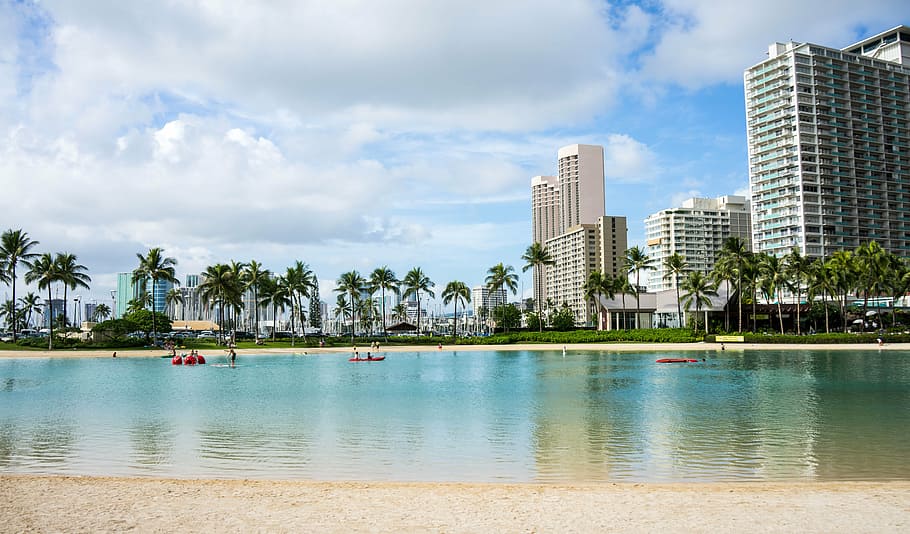設立・運営 2021.10.08
EM 1 キャプティブの設立 No.1 (背景)
目次
当コラム内の文章・画像等の無断転載・引用・複製を固く禁じます。
For those who prefer to read this column in English, the Japanese text is followed by a British English translation, so please scroll down to the bottom of the Japanese text.
「グローバル・リンクのホームページを見て、キャプティブを設立するメリットが大きいということが解ったので設立の方向に進みたいと思っているが、なぜ日本ではなく海外に設立しなければならないのか、保険に詳しくないトップでも解るように、また他のポイントも含めて分かりやすく教えてもらえないか」というお声をホームページに頂いた。
良い機会なので、「コラム」の「運営実務」カテゴリーを「設立・運営」と改め、最新の事例を取り入れながら「キャプティブの検討、設立、運営の一連のステップ全般」に関して、これから10回にわたり、具体的なポイントを詳しく記していきたい。

1.キャプティブを海外に設立する理由
まず、「なぜキャプティブは日本では設立できないのか、なぜ海外に設立するのか」という疑問である。日本で設立できれば良いが、以下の理由によって、キャプティブを日本で設立することはできないのが現状である。
① 日本では「一社のみに保険を提供する(引受ける)保険会社=自社専用保険会社(キャプティブ)」という存在は、保険会社及び保険募集の規制を目的とした、保険に関する根本法である「保険業法」には定められていない。また、
② 日本損害保険協会の行動規範にも、「安心かつ安全で持続可能な社会の実現と、経済および国民生活の安定と向上に資する相互扶助制度を円滑に運営することが、損害保険事業の社会的使命として求められている」とあるとおり、保険会社はその社会的使命として、国内の個人、企業に遍く広く一円に補償を提供することを求められている存在である。
これらの点から明らかなように、キャプティブを日本で設立するためには、「キャプティブに関する、またその特性を活かす法律の整備」が必要な状況である。
2.海外に設立する効用
上記理由のため、キャプティブは海外に設立することになるが、海外に設立することは日本に設立するよりも、以下のような効用を得ることが出来るという面もあり、「海外に設立=マイナス」では無いことにも留意が必要である。
① 現在キャプティブの設立動機として一番多いとされている、南海トラフ地震、また富士山の噴火等、これら「『国難』とも思えるような大災害に対応する地震保険の補償を万全にするためにキャプティブを設立する」ということがその目的であった場合、このような大災害に襲われた時、「日本の通貨、円への評価」はどのようになっているのだろうか?
経済活動に甚大な影響と損害を与える事象によって日本経済への評価は大変厳しくなり、「通貨価値の大幅な下落」が予期されるのではないだろうか。その時、混沌とした日本から離れた海外に設立したキャプティブの銀行口座に収益として蓄えられている「ドル資金」は、大災害から企業が復興するためには非常に大きな力を果たすのではないだろうか。
② 日本に存在する損害保険会社の数は、2021年9月27日現在、内国損害保険会社としては29社、外資系損害保険会社の支店としては21社、合計50社である。これに、少額の補償を保険期間1年間に限って「保険」の提供が認められている、諸外国では「共済」と見なされている少額短期保険会社112社を含めても、200社にも満たない数である。キャプティブを設立する場所は「ドミサイル(設立地)」と呼ばれるが、グローバル・リンクが様々な点から推奨しているドミサイルは米国、ハワイ州である。
2017年末の統計では、米国の損害保険料は約8300億ドル(約90兆円)の規模であり、日本の約115億ドル(約12兆円)の約8倍の規模である。また、損害保険会社の数は約2,000社である。これだけ大きな規模の市場であることは、「自己責任原則」を背景としながらも損害保険会社には自由で広範な活動が認められているということであり、また保険監督当局の監督姿勢にも「柔軟性を見受けることができる」と言われている。
こういった点から、保険会社の一形態である「キャプティブ」を米国に持つことは、「自社リスクのみを引受けるキャプティブ(自社専用保険会社)」という存在から「一般の保険会社への事業拡大の途」を進め、企業の新たな事業展開に寄与できる可能性を有しているのではないだろうか。
3.日本の損害保険会社を介する背景
インターネットが発展して、「オンライン」が世界経済を動かす「媒体」になっても、「日本に所在するリスク」に関し海外の保険会社に直接保険を掛けることは、「日本で免許を受けない保険者によって日本のマーケットに混乱をきたされる可能性がある」ため、次の保険業法第186条によって原則として行うことはできない。
第186条(日本に支店等を設けない外国保険業者等)
日本に支店等を設けない外国保険業者は、日本に住所若しくは居所を有する人若しくは日本に所在する財産又は日本国籍を有する船舶若しくは航空機に係る保険契約(政令で定める保険契約を除く・・・。
つまり、日本企業がキャプティブを海外に設立できても、そのキャプティブに「保険会社として日本国内に所在するリスクを直接保険に掛けることはできない」ということである。
では、どうするのか?
損害保険業界で広くおこなわれ、無論、適法、合法な、その手法と背景については紙幅を割く必要があるため、次回キャプティブの設立No.2にて記すこととしたい。

今回のまとめ
日本企業が海外に保有するキャプティブ(自社専用保険会社)の数は、未だに100社程度のレベルである。一方、米国の企業、団体が設立したキャプティブの数は4,000社を超え、世界全体では8000社を超える規模にまで拡大してきている。この彼我の差はどこから来るのであろうか。
リスクマネジメントの専門職である「リスクマネージャー」の存在が日本の企業に於いては見られず、多くの企業、団体では「総務部門の所管業務の一部」として、本来保険はリスクマネジメントの一分野に過ぎないにもかかわらず「保険業務=リスクマネジメント」という視野で執行されているということがその一つの理由として挙げられるであろう。
また、欧米では「リスクマネジメント=企業戦略の中心」とされているにも関わらず、一般的に日本では企業経営陣がリスクマネジメントに関心が薄いことは昨今の企業不祥事等でも明らかなとおりであり、リスクマネジメントを企業戦略の柱としている企業が少ないのもその理由の一つとなろう。しかし、グローバル・リンクがキャプティブの設立、運営を委託された企業すべてでは、検討の初期の段階から企業経営陣がその検討の中心者として強く積極的に関与され、設立後も「キャプティブの年次総会」には必ず出席され、「キャプティブ設立によって、収益面、リスクマネジメント体制の確立等で大きな効用」を自らの目で確認され、その効用を享受されている。
また、元受保険会社となるべき損害保険会社の対応も欧米と日本では大きく異なっていることも挙げられるであろう。この点については、「キャプティブ化によって収益が減少する」懸念からか、メインの損害保険会社がキャプティブの設立を検討している企業に対して「伝えていること」に強い違和感を憶えることも多いのが実情である。
そういう日本でも先進的な損害保険会社が存在しており、旧態依然とした損害保険会社の間には非常に大きな差がある。試みに「キャプティブ」という言葉で検索サイトを調べられると、そこに名前の出ている損害保険会社とそうでない損害保険会社のことに気がつかれるであろう。その理由と背景こそ、日本に於けるキャプティブの進化を止め、日本の損害保険分野をガラパゴス化させている元凶であると感じているので、別のコラムで詳しく「バイアスの掛かっていない情報の提供」をしたい。
昨年来のコロナ禍によって引き起された「二次災害」とも言うべきものが「サイバー犯罪」である。サイバー犯罪が急増して、対応する「サイバー保険」分野で保険金の支払いが急増、損害率が大きく悪化して「海外の損害保険会社(=再保険会社)」は、収益回復を図るため軒並み同分野のみならず他の保険分野の保険料率も大幅に上げてきている状況が海外の保険専門誌等で報告されている。こういう事態に対応するため、海外では「もう、損害保険会社には頼ってはおられない」とばかりに「キャプティブの設立ラッシュ」が起きていることも同時に報告されているが、なぜか日本のマスコミでは一切報道されていない。
日本の損害保険会社が年に一度更改する「再保険契約」の更改時期は4月1日である。前年の10月ぐらいから再保険契約の更改交渉が始まるのが一般的である。このところ毎年、4月の更改時期になると新聞紙上を賑わす言葉の一つが、「地震保険料大幅アップ」であった。
来年4月は、コロナ禍に関わる保険金の支払いで大きな損失を被った海外の再保険会社から「再保険料の値上げ」を突きつけられ、それを受けざるを得ない日本の損害保険会社は一斉に保険料の値上げを発表する可能性が高いのではないだろうか。それはコロナ禍に直接関係する「サイバー保険」、「事業中断保険」に限らず、大きな再保険料ボリュームになっている地震保険分野にも波及するであろう。「世界の全ての再保険分野が来年の更改時期にはコロナ禍の影響を大きく受ける」と既に海外の保険専門誌等では何度も報道されているからである。
生命保険と違い再保険を駆使して引受ける(=引受けざるを得ない)性質をもっている損害保険は、好むと好まざるとに関わらず世界の動きに大きく左右される、それだけ世界の損害保険分野の再保険は蜘蛛の巣のように世界中に張り巡らされて取引されているからである。
来年4月をどう迎えるか、リスクマネジメント部門の力の見せ所である。
執筆・翻訳者:羽谷 信一郎
It is strictly forbidden to publish, copy, quote or distribute the contents of this column without permission.
English Translation
EM (Establishment・Management)1 – Establishment of Captives No.1 (The background)
We received a request from a potential client on our website: “We have seen on Global Link’s website that there are many advantages to setting up a captive and we would like to proceed with it. However, we would like to know why we should set up a captive overseas instead of in Japan. Can you make it easier for the management team who are not familiar with insurance to understand and make other points as well?” he asked us on our website.
This is a good opportunity for us to change the “Management Practices” category of our “Column” to “Establishment and Management”, and we would like to write a series of 10 articles on “the whole process of considering, establishing and managing a captive” in detail, incorporating the latest examples.
1. Why set up a captive overseas?
The first question to be answered is: “Why can’t a captive be established in Japan and why should it be established overseas? While it would be nice if a captive could be established in Japan, it is currently not possible for a captive to be established in Japan for the following reasons
(1) In Japan, the Insurance Business Act, which is the fundamental law regulating insurance companies and insurance solicitation, does not provide for the existence of a “captive”, i.e. an insurance company that provides (underwrites) insurance to only one company. In addition
(2) The code of conduct of the General Insurance Association of Japan also states that “the social mission of the non-life insurance business is to smoothly operate a system of mutual assistance that contributes to the realization of a safe, secure and sustainable society and to the stability and improvement of the economy and people’s lives”, and as such, insurance companies are required to provide compensation to individuals and companies in Japan in a wide and uniform manner as their social mission.
It is clear from the above that in order to establish a captive in Japan, there is a need to “develop laws relating to and making use of the characteristics of captives”.
2. Benefits of setting up abroad
For the above reasons, it is important to note that establishing a captive overseas does not necessarily mean a negative outcome, as it can have the following advantages over establishing a captive in Japan
(1) If the most common motivation for setting up a captive was to provide earthquake insurance coverage in the event of a major catastrophe, such as the Nankai Trough earthquake or the eruption of Mt. Fuji eruption. If the purpose of the captive was to “establish a captive to ensure earthquake insurance coverage in the event of a catastrophe that could be considered a ‘national disaster'”, then How does “the Japanese currency, the yen”, measure up?
An event with such a devastating impact on economic activity and damage to the Japanese economy would be very hard on the Japanese economy, and a “significant fall in the value of the currency” might be expected. At such a time, the “dollar money” safely stored in the bank accounts of captives established overseas, away from the chaos of Japan, would be of great help to companies in their recovery from the catastrophe.
(2) As of 27 September 2021, there are a total of 50 non-life insurance companies in Japan, 29 as domestic non-life insurance companies and 21 as branches of foreign non-life insurance companies. This number is less than 200, including 112 small-amount short-term insurance companies, which are allowed to provide “insurance” for small amounts of compensation for a period of one year, and which are considered “mutual insurance” in other countries. The place where a captive is established is called the “domicile”, and the domicile recommended by Global Link in many respects is Hawaii, USA.
At the end of 2017, US property and casualty insurance premiums were worth about $830 billion, about eight times the size of Japan’s $11.5 billion (¥12 trillion). There are about 2,000 non-life insurance companies. The fact that the market is so large means that non-life insurers are allowed to operate freely and widely, despite the “principle of self-responsibility”, and that insurance regulators are said to be “flexible” in their supervisory approach.
In this regard, having a captive in the US, which is a form of insurance company, may have the potential to make a significant contribution to the development of a company’s business by moving it from being a captive that underwrites only its own risks to an insurance company.
3. Background to the use of Japanese non-life insurance companies
Even though the Internet has developed and “online” has become a medium to move the world economy, direct insurance to foreign insurance companies for “risks located in Japan” is not allowed in principle according to Article 186 of the Insurance Business Act, because “there is a possibility of confusion in the Japanese market by insurers who are not licensed in Japan”.
Article 186 (Foreign Insurers, etc. without Branches, etc. in Japan)
A foreign insurer which does not establish a branch office, etc. in Japan shall not issue insurance contracts (excluding insurance contracts specified by a Cabinet Order…) relating to a person having a domicile or residence in Japan, or property located in Japan, or a ship or aircraft having Japanese nationality.
This means that even if a Japanese company can set up a captive overseas, it cannot “directly insure risks located in Japan as an insurance company”.
So what to do?
The method and background behind the practice, which is widely used in the non-life insurance industry and is, of course, legal and legitimate, which will be described in the next issue of the captive’s establishment No. 2 in this series.
Summary of this issue
The number of captives owned by Japanese companies abroad is still at a level of around 100. On the other hand, the number of captives established by US companies and organisations exceeds 4,000, and the global total has grown to more than 8,000. Where does the difference between the two countries come from?
One of the reasons for this is that there are no “risk managers” in Japanese companies, and in many companies and organisations, risk management is seen as “part of the general affairs department”, even though insurance is only one part of risk management.
Another reason is that in Japan, corporate management is generally not interested in risk management, despite the fact that in Europe and the US, risk management is considered to be central to corporate strategy, as evidenced by recent corporate scandals. In all of the companies where Global Link has been commissioned to set up and manage captives, the management of the company has been actively involved from the very beginning of the process and has attended the annual meetings of the captive to see for themselves the benefits of setting up a captive in terms of profitability and risk management.
It may also be noted that the response of non-life insurance companies, which should be the primary insurers, is very different in Japan than in Europe and the US. In this respect, there is often a very strong sense of discomfort with what the main P&C insurers are “telling” companies considering setting up a captive, perhaps due to fears that they will lose revenue as a result.
Even in such a country as Japan, there are advanced non-life insurance companies, and there is a very big difference between them and the old-style non-life insurance companies. If you look up the word “captive” on a search engine, you will notice that some P&C insurers are listed and others are not. I feel that this is the reason and context that has stopped the evolution of captives in Japan and has made the Japanese non-life insurance sector Galapagos. I would like to elaborate on this in a separate column on providing non-biased information.
We feel that this is the reason and background that has stopped the evolution of captives in Japan and has made the Japanese non-life insurance sector Galapagos. I would like to elaborate in another column on the provision of non-biased information.
Cybercrime is a secondary disaster triggered by the covid-19 from last year. The rapid increase in cybercrime has led to a sharp rise in claims payments in the cyber insurance sector, and the loss ratio has deteriorated so much that foreign non-life insurers (i.e. reinsurance companies) have been raising premium rates across the board, not only in this sector but also in other insurance sectors, in order to recover profits, according to reports in insurance journals. To cope with this situation, it is also reported that there is a rush to set up captives overseas, as if to say “we can no longer rely on non-life insurers”, but for some reason this has not been reported in the Japanese press at all.
Reinsurance contracts are renewed annually by Japanese non-life insurers on 1 April. Negotiations for the renewal of reinsurance contracts usually start in October of the previous year. One of the words that have appeared in the newspapers every year around the time of the April renewal is “a big increase in earthquake insurance premiums”.
It is highly likely that next April, Japanese non-life insurers will be forced to announce increases in their premiums in response to the “reinsurance premium hikes” imposed on them by foreign reinsurers who suffered heavy losses in the payment of claims related to the covid-19 disaster. This will not only be the case for cyber and business interruption insurance, which are directly related to the covid-19 disaster, but also for earthquake insurance, which has a large reinsurance premium volume. It has already been reported in the international insurance press many times that “all reinsurance sectors worldwide will be significantly affected by the covid-19 disaster at renewal time next year”.
This is because, unlike life insurance, non-life insurance, which is underwritten (or forced to be underwritten) through the use of reinsurance, is heavily influenced by global trends, whether we like it or not, and because reinsurance in the non-life sector is traded around the world like a spider’s web.
It will be interesting to see how the risk management sector fares in April next year.
Author/translator: Shinichiro Hatani

